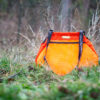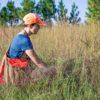This summer, we will be training for the NAVHDA Invitational for the second time. The event is being held in Bloomingdale, Ohio in mid-September. Although I felt that we had a successful training season last summer, Zara did not pass because of the blind retrieve. I ran her in the Utility test in December to re-qualify her for this year’s Invitational (you have to earn a UT Prize 1 the year prior to participate).
I’m anticipating that training this year will be somewhat easier than last year. After all, none of the tasks will be new to her. In fact, if I had to run her in the Invitational today, it’s possible she could pass. Knowing that takes some of the pressure off. Last year, the blind retrieve was a new concept and in the first few months, I had some uncertainty about whether I could successfully teach it to her.
Overall, my goal this summer is to refine several behaviors and train others more thoroughly. Below is a list of my training goals.
Field Work
Field work is typically Zara’s strong suit. This is where I have spent the most training over the entirety of her bird dog career. I also spent the last five months running her in AKC field trials. However, there are a few things that I would like to clean up before the Invitational.
Retrieving
Zara loves to retrieve. However, she has the tendency to want to parade around with the birds and not come directly to me after she picks it up. This problem manifested itself when we ran the Utility test in the fall. She demonstrated this behavior in every event: field retrieves, the duck retrieve, and the duck drag. I spoke to two of the judges afterwards and got some tips on how to improve her retrieving.
From here on out, I will do several things. If she starts veering away from me as she is coming back with the bird, I will use the ecollar on a continuous low stimulation along with the word “come.” As soon as she comes toward me, I will release the pressure. I am also requiring her to come directly to my front and sit in front of me. I used to ask her to come to my side, but that leaves too much room for error in practice. I will also ask for eye contact before I take the bird, and I won’t snatch it away from her right away. I will praise her and let her hold it for a bit.
I’ve already done these techniques off and on since February and she’s good in my backyard or a field with a thawed out dead bird. Fresh birds are a different story.
This video was taken in February 2022 and shows Zara’s tendency to not come right to me with the bird. This was the first pen-raised bird that was shot for her in several months and I wanted to see what she’d do without any corrections at first. She blows me off and pees right in front of me. The behavior at the end is what I want.
Better Control
Zara listens to me very well when she’s running in the field. Typically, if I give her a “this way” command, she responds right away. However, she wants to be moving the whole time (except when she’s pointing). She doesn’t like pausing for water, breaks, etc. Last year, when I was photographing the Invitational, I watched several handlers take a bird from their dog and slowly heel them away. The dog walked nicely next to them and stood until they were ready to be released again. They also stayed in the water tubs without much fuss.
On the other hand, it was like trying to handle a bucking bronco with Zara in the water tubs. She had no patience for waiting around and wanted to get back to hunting right away. I want to work on keeping her calm and waiting after each bird contact. Even though her behavior last year didn’t affect our scores in the field, I think it looks more polished to have a dog that is under more control.
Backing
It seems like I’ve taught Zara to back other dogs’ points multiple times over the past few years. I am confident that she understands backing and I’ve seen her do it several times in the last few months. However, I would not say that it’s her favorite thing, and if she can avoid the situation, she often will. She backed a friend’s vizsla twice during a training session in mid-March. But when I ran her in a field trial at the beginning of April, she failed to back her bracemate when he was standing on point in the middle of the field. She glanced at him three separate times and decided not to stop.
I don’t think she’s forgotten how to back, but it’s certainly something we will need to keep working on and reinforcing. Last year, I found that shooting a live bird for her as soon as she backed as a reward, or letting her retrieve the bird instead of the pointing dog helped a lot.
Heeling
Heeling has always been a struggle for us, since I didn’t know how to go about teaching it for many years. Zara has a decent heel, but it can be loose and sloppy at times. She usually wants to forge ahead of me. She’s very good at heeling in low- to mid-distraction areas, but has trouble in high-distraction areas, like at a NAVHDA test when she wants to get to the duck. Last year, I had trouble replicating how amped up she’d be at the Invitational on a regular basis.
My goal this year is to redo heeling from the ground up. I want to work on a focused, precise heel like people use for AKC obedience. I plan on reaching out to a NAVHDA judge and trainer who has experience with this soon.
This video shows me starting to teach Zara casting commands in water last summer. The idea is to get her attention using the whistle and be able to direct her with a hand signal if she’s far away from me in the water.
Double Marked Retrieve
This exercise was not particularly difficult for Zara to learn last year. The main thing I had issues with was getting her in the right position after the second retrieve. This sequence is preceded by heeling. You heel your dog off-leash to the pond and position them in a “stay” or “whoa” command. After she came back with the first duck, I usually had no issues lining her up to send her for the second duck. But when she returned with the second duck, keeping her next to me before we had to heel out was a bit tricky.
After I took the duck, she would want to shake off water, which is fine, but then if I didn’t immediately give her a positioning command (I use “with me” to get her next to my side and ready to heel), she would want to go toward the water. Reentering the water is not allowed. I felt like I gave too many commands in this sequence – give (me the duck), shake, with me, and then “march” to heel out. I also experimented with giving a “whoa” command after I took the duck to freeze her in place while I handed the duck off to the judges and got ready to heel out. Either way, it was a bit sloppy, so I want to work on that. Hopefully practicing control with heeling will help.
Blind Retrieve
This is the event we didn’t pass last year, so obviously I will be spending extra time to proof this exercise. Similar to last summer, I will start reintroducing blind retrieves by doing drills on land. I want to reinforce that Zara needs to go straight out and not go into a search. I didn’t have this issue very much in the water, but she sometimes did it on land.
As I discussed in my post about preparing for last year’s Invitational, I will follow through by proofing casting commands on both land AND water. That is one thing I didn’t do last year and if I had, we may have passed. I also want to do more complicated/confusing blinds later in the summer. Last year, since this was a new task to her, I didn’t want to confuse her and was really careful about making the blinds clear. But now it’s time to take it to the next level.
I also want to train for more distractions. I have two things specifically in mind. One is to train with live ducks in the vicinity. It doesn’t matter if there’s a live duck on the shore to the right of her, I need her to obey my command and go straight across the water. I also would like to throw rocks into the water while she’s swimming across to simulate a fish jumping out of the water.
Additional Goals
The only “event” I didn’t mention was the honor by blind. I don’t have anything specific that I’d like to do differently this year, but we’ll certainly practice it. The only remaining goal I have is to not overtrain. Last summer, I started training for the September Invitational on April 1st. This year, I’m not going to start until May 1st. We just finished up running field trials for several months and I’m forcing myself to take a break. By the end of August last year, I was feeling pretty burnt out from all the training, driving around, and early mornings. I’m trying to avoid that as much as possible this time around.
If you are in the same situation as me, what are your NAVHDA Invitational training goals this summer? Leave me a comment below. :)







Terry Ann – I would say that your goals and methods for training this summer for the IT are very well stated and attainable. We used throwing another bird out and/or letting Kip retrieve the bird when he backed another dog to a good result when training last summer. Also, it’s a great plan to introduce distractions during the blind retrieve practices. If we can help, just reach out.
Thank you for the offer! It has also helped Zara to retrieve a bird when backing because she loves to retrieve.